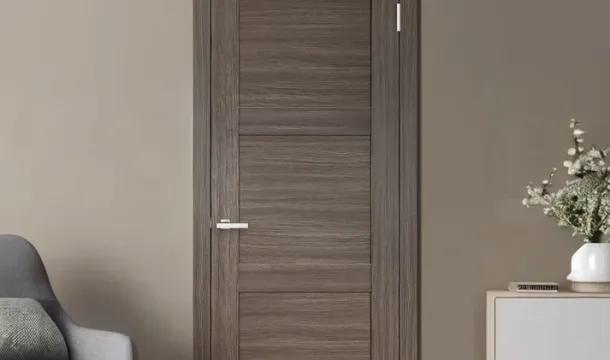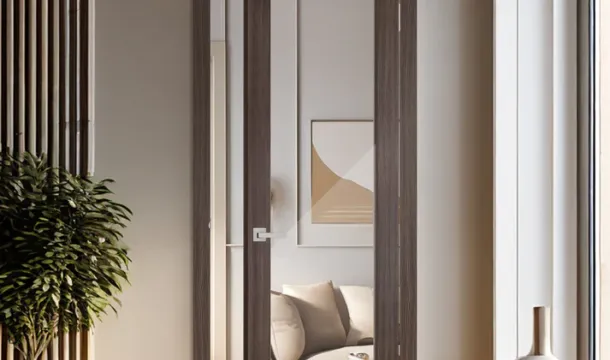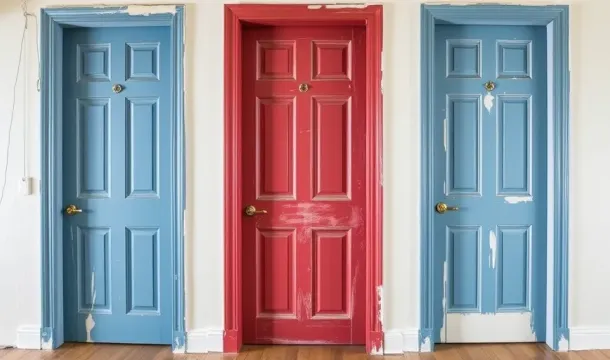Create Visual Flow with Coordinated Interior Door Designs
Popular Articles
Achieving visual flow in your home begins with selecting interior doors that reflect consistent design and style. Doors serve as key architectural elements that connect rooms while enhancing overall aesthetics. Opt for door designs that complement the existing color palette and materials used throughout your space to maintain harmony.
Consistency in door finishes, hardware, and panel styles helps unify diverse rooms without sacrificing individuality. For example, matching door frames and handles create subtle transitions that guide the eye smoothly from one area to another. Avoid abrupt contrasts by choosing doors aligned with your home's prevailing design language.
Integrating coordinated doors also supports functional flow–doors sized proportionally to room scale improve movement and balance. Consider glass inserts or decorative panels to add depth while preserving openness between connected spaces. Properly planned door arrangements contribute not only to aesthetics but also to intuitive circulation within the home environment.
Choose Consistent Door Materials
Maintaining material consistency across interior doors enhances the visual flow and reinforces a coordinated home design. Select door materials that complement the overall style and finishes used in your interiors to create seamless transitions between rooms.
- Wood: Opt for the same wood species or veneer throughout to preserve texture uniformity. For example, using oak doors with matching oak trim supports a warm, cohesive look in traditional or rustic interiors.
- Glass: When incorporating glass panels, choose consistent glazing types and frame materials–such as frosted glass with aluminum frames–to maintain clarity in design and light diffusion patterns across spaces.
- Laminates and MDF: For modern or minimalist homes, consistent laminate finishes or painted MDF doors ensure smooth surfaces that blend effortlessly with cabinetry or wall treatments, avoiding visual disruption.
- Metal Accents: If metal elements are part of door construction, use matching hardware finishes (brushed nickel, matte black) and metal tones on all doors to unify the interior aesthetic.
Choosing uniform door materials aligns with your home's architectural style while sustaining an uninterrupted design flow. Material consistency supports both functional durability and a balanced appearance that ties together diverse living areas effectively.
Match Door Colors Strategically
Select door colors that reinforce the visual flow by aligning with the dominant palette of your interior spaces. For open-plan homes, use consistent door hues to maintain seamless transitions between rooms, enhancing spatial continuity and overall aesthetics. In contrast, for segmented layouts, slightly varied shades within the same color family create subtle differentiation without disrupting coordinated style.
Consider lighter tones for interior doors in smaller or darker areas to reflect natural light and expand perceived space, while richer colors suit larger rooms to anchor the design scheme. Matching door colors with trim or cabinetry rather than walls can add depth and intentionality to the home’s flow. Avoid stark contrasts unless deliberately aiming for a statement; instead, prioritize harmony to support consistency throughout corridors and adjoining rooms.
Matte and satin finishes offer understated elegance that complements diverse interior styles, preventing glare that might interrupt visual cohesion. When selecting paint or stain, test samples under various lighting conditions within your home to ensure color accuracy across different times of day. This strategic approach to door color selection strengthens the coordinated effect of your interiors and elevates the sense of thoughtful design integration.
Select Complementary Door Styles
Choose door styles that balance individuality with overall home design consistency. Mixing modern flush doors with traditional paneled ones creates visual tension, disrupting coordinated aesthetics. Instead, opt for variations within the same style family–such as shaker doors paired with craftsman designs–to maintain subtle contrast without breaking flow.
Consider the architectural details of your interior when selecting door styles. For example, minimalist homes benefit from clean-lined slab doors, while classic interiors suit raised-panel or French doors. Aligning door profiles and moldings supports seamless transitions between rooms and reinforces a unified visual narrative throughout the home.
Use this table to guide complementary style pairings based on common interior themes:
Avoid combining drastically different styles like ornate Victorian with ultra-modern glass doors in adjacent rooms to prevent interrupting the home's visual rhythm. Instead, create cohesion by repeating key design motifs–such as panel shapes or hardware finishes–across varied door types to achieve a coordinated yet dynamic interior look.
Align Door Hardware Details
Maintain consistency in door hardware by selecting matching finishes and styles across all interior doors to reinforce visual flow and elevate overall home design. Opt for uniform handle shapes, lock mechanisms, and hinge colors that complement the door materials without disrupting coordinated aesthetics.
Choose hardware finishes such as matte black, brushed nickel, or antique brass according to the dominant palette of your interior space, ensuring a seamless transition from room to room. Consistent alignment of hardware height and placement on each door enhances symmetry and supports a cohesive appearance.
Integrate subtle design elements like matching backplates or decorative rosettes to unify hardware details while maintaining functionality. Prioritize durability alongside style to guarantee long-lasting performance that preserves the integrity of coordinated doors throughout your home.
Incorporating consistent hardware details contributes significantly to the visual harmony of interior doors, strengthening the sense of flow and elevating the overall aesthetic quality within any living environment.
Integrate Doors with Room Layouts
Position interior doors to support natural movement patterns within the home, enhancing flow between rooms. Align door swings and openings with furniture placement and traffic zones to avoid obstructions and maintain a coordinated spatial experience.
Consider door dimensions relative to each room's scale; oversized doors can overwhelm smaller spaces, while narrow doors may disrupt visual balance in larger areas. Consistent sizing across adjacent rooms reinforces design consistency and seamless transitions.
Incorporate architectural elements such as wall niches, moldings, or built-in shelving near doorways to visually anchor doors within the layout. This approach integrates doors as intentional design features rather than afterthoughts.
Use transoms or sidelights in interior doors connecting communal spaces to increase light flow and create openness without compromising privacy. These details contribute to a unified style that complements the home's overall interior design.
Select door placement that respects functional zoning: for example, situating bedroom doors away from noisy living areas supports comfort while maintaining a cohesive visual rhythm throughout the home’s layout.
Popular Articles

Choosing the Perfect Interior Doors for Your Canadian Home

A Complete Guide to Choosing Interior Doors for Canadian Homes
